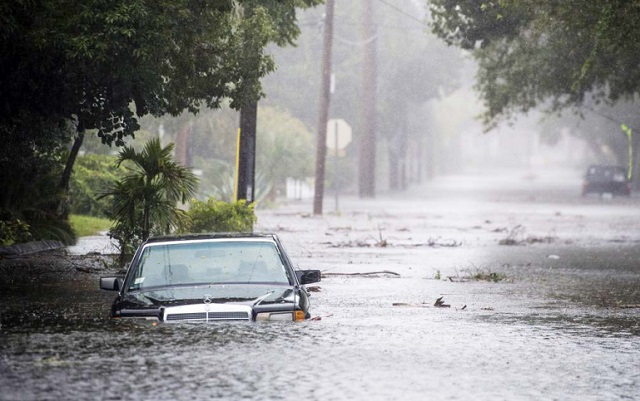
Avoid it if you can, be careful if you can’t
| MOTORING GURU | The rain these days is throwing up the unexpected. A road that you have driven on for years without incident will easily become flooded. That is why it is important to recall the tips you picked up during your defensive driving school. We share a few here.
First and most importantly, avoid driving on a flooded road. By flooded road we mean a road with at least 4 inches of water (your average car tyre is about 6.5 inches). That means if the water goes beyond half of your tyre avoid it. Remember the engine’s air intake on many cars is down at the front yet it takes just a fraction of a tea-cup of water sucked into your engine to damage it.
If you see water and figure it is too deep for you to walk through, then it possibly not a good idea to attempt to drive through either. Take extra caution if the water is moving. If moving water reaches the window level of your car, it is possibly enough to leave the car floating without grip on the surface below. Two feet of moving water (about your waist level) can sweet away most vehicles. It does not matter that you drive an SUV. Avoid flooded roads.
This caution is made for several reasons: Water beyond the mid-tyre level can easily enter the exhaust and kill off your engine leaving you stranded. Do not try to restart engine in water. It will be wrecked. Only 6 inches of water on the road is enough to cause you to lose control of the vehicle, often with dire consequences. Water under the car can easily splash into the electrical wiring and wreak havoc. So, avoid flooded roads.
But what if you cannot? Then you need to drive with extra caution. Here are some tips. They are in two parts; part one: deciding whether to drive through or not and two, how to drive through safely (possibly).
Before driving through any flooded road, never assume you know the road. Flood water does strange thing to roads. It can easily sweep away a whole section or move manhole covers. It can also hide stuff it has found in path and deposited on the road, including sharp objects or dead cows.
If you are unfamiliar with the road, test the depth of the water with a stick. Remember, the road is highest in the middle, so use that to gauge how deep it is on the sides.
When driving, plan your driving to avoid having to come to a complete stop in the water if you can; for example if there is a jam. Follow the path of the drivers before you who have crossed successfully. Drive slowly and steadily. This helps you avoid stirring up the water into a wave that makes it more difficult to drive.
If you do get stuck in flood water, especially if it is moving water; stay in the car because it is safer. Moving water is very powerful, it can sweep you off your feet and away. Also, if you feel the car starting to float, open a door to let water in. It will make the car heavier and possibly enable you to regain your grip.
After crossing a flooded patch of road, test your brakes before speeding off. If you are not comfortable, allow the brake pads to dry a bit and test again before driving off.
****
 The Independent Uganda: You get the Truth we Pay the Price
The Independent Uganda: You get the Truth we Pay the Price


